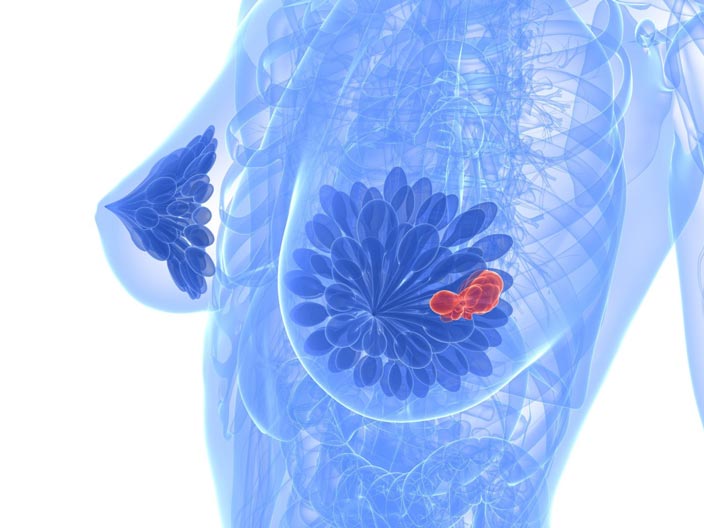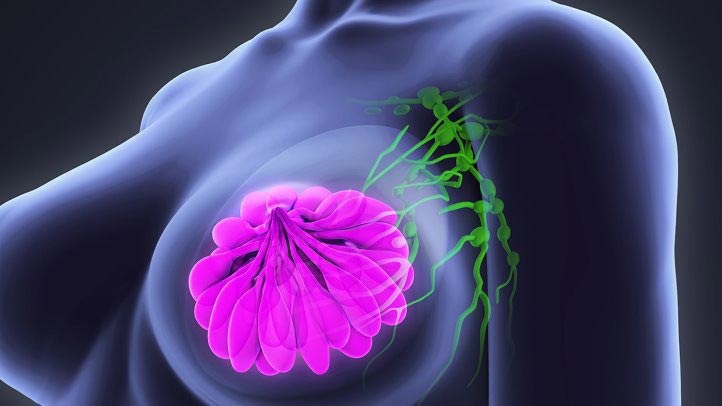

Breast cancer is the most common form of cancer in women. According to statistics, the situation in Greece seems to be better compared to the countries of the northern hemisphere. The new cases that are recorded every year in our country are estimated at approximately 4500.
The reasoning of the disease is multifactorial. The most important factors associated with an increased risk of developing the illness are:
- Old age. 80% of cancers occur in women older than 50 years.
- Existence of family history. Women who have one or more first- or second-degree relatives who have had breast cancer before the age of 40 or who have first-degree male relatives with breast cancer are more likely to develop cancer.
- The risk increases in women with early period and delayed menopause, in childless women and in women who have had a child after the age of 35.
- A woman who has had breast cancer once is more likely to develop new cancer in the same or the other breast.
- Genetic mutations in genes inherited from parents to their children (BRCA-1, BRCA-2, PTEW, ATM genes).
- Long-term use of contraceptive pills and hormonal substitutes.
- Excessive alcohol consumption, obesity and smoking.
- Exposure to radiation.
Not all lumps are cancerous and malignant. The most common forms of breast cancer are ductal carcinoma of the mammary glands and lobular cancer originating from the lobes, the parts from which breast milk is produced and are divided into infiltrative and non- infiltrative or in situ. The former is considered advanced and metastasizes and the latter is considered to be beginning and potentially does not metastasize. Other forms of breast cancer include tubular, papillary, mucosal carcinoma and inflammatory breast cancer. It gives lymphogenous metastases to the peripheral lymph nodes (mainly the axillary ones) and hematogenous to the liver, bones and lungs.
Breast cancer can manifest as:
- A lump that may not hurt
- Transparent secretion or traces of blood from the nipple
- Pain
- Nipple retraction
- Change in the contour of the breasts
- Redness of the skin
- The skin may look like orange peel or have indentations
In order to increase the chances of detecting breast cancer at an early stage where the chances of effective treatment are higher, it is important to have preventive examinations. Such examinations are:
Clinical examination of the breast by a doctor and should be done once every three years in women at low risk and under the age of 40 and once a year in women at high risk or over the age of 40.
Breast self-examination. By examining the breast herself palpably and in front of a mirror once a month, the woman can detect changes in time.
Mammogram. It is a low-radiation x-ray of the breast that can detect tumors before they can even be perceptible by palpation. During the mammogram, the breast is compressed between the two plates of the machine. This causes pain but normalizes the breast tissue thus making it easier to detect abnormalities. There is generally disagreement among doctors about the age at which a woman should have a mammogram. Women under the age of 40 usually do not need a mammogram unless they have a problem or belong to a high-risk group. Women 40-50 years old should have a mammogram every two years in combination with ultrasound and those over 50 years old every year.
Diagnosis begins when a breast mass is discovered. If no mammogram or ultrasound has been performed, then this test follows. In some cases, when the diagnosis is doubtful, an MRI mammogram may be needed, especially to examine breasts with dense glandular tissue. The biopsy of the lesion may also be required, which can be done either with a fine needle (FNA-cytological biopsy), or with a thick needle (histological biopsy), or with the guidance of a special machine (stereotactic biopsy) or finally with a rapid biopsy during surgery before tumor removal (open surgical biopsy).
The first step in treating the disease is surgery to remove the tumor. There are different types of surgeries. When the tumor is removed only together with a part of the adjacent tissue we talk about tumor excision. When the entire mammary gland is removed, we are talking about a simple mastectomy or a more extensive operation called a modified radical mastectomy. These operations are accompanied by removal of lymph nodes in the armpit to a different extent depending on their suspected infiltration. Detection and sampling of the sentinel lymph node, which is considered to be the first lymph node to be filtered, is often necessary and is done either by injecting a radioactive isotope and using a g-camera or by injecting special pigments into the primary site.
In women with gene mutations preventive mastectomy is also applied in recent years.
The factors taken into account in the choice of postoperative treatment are the size, the histological type, the differentiation of the tumor, the presence of hormone receptors, the result of the Her2 / neu test and the general condition of the patient. The patient can undergo hormone therapy, chemotherapy, radiotherapy or a combination of these.
 English
English  Ελληνικά
Ελληνικά 